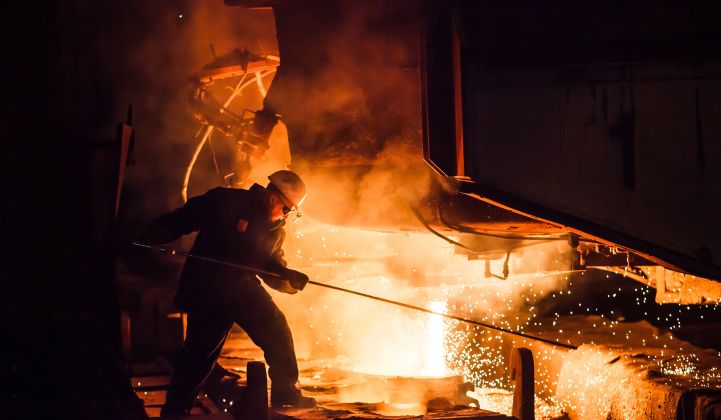A new "green steel" venture in Sweden has been launched with bold plans to start production as early as 2024.
The H2 Green Steel initiative will then scale up to 5 million tons per year of green steel production. It would be the world’s first large-scale green steel producer, with a total of €2.5 billion ($3.04 billion) of investment planned. Strategic investors already secured include the EU-backed incubator and investor EIT InnoEnergy.
According to EIT InnoEnergy, Series A equity funding of €50 million ($60.7 million) is ready to close. Backers include Spotify co-founder Daniel Ek, truck maker Scania, and SMS Group, a toolmaker for the metals sector. Vargas Holding and Ikea-linked mission-based investor the Imas Foundation are also onboard. Further equity rounds and green project finance will be used to raise the full €2.5 billion, an EIT InnoEnergy spokesperson told GTM.
Following in the path of Northvolt
The ambition is similar to that of Swedish greenfield battery manufacturer Northvolt. The battery maker has developed a full-scale greenfield manufacturing business in less than five years of operations. The firm has raised more than €3 billion ($3.6 billion) for its gigafactories in Sweden, Germany and Poland with major strategic investment from its customer base along the way.
Vargas chief Carl-Erik Lagercrantz, who has been appointed chairman of the board of H2 Green Steel, holds the same position at Northvolt. The facility will use green hydrogen to process the iron into steel, leaning on existing expertise in the region.
One component of the green steel business case is access to Sweden’s ample renewable energy resources. Its site in Boden-Luleå in northern Sweden already hosts a major seaport and an established traditional steel-making sector.
“The H2 Green Steel initiative has the scale, ambition, innovative business model and implementation team to become a flagship of Europe’s position at the forefront of the transformation of energy-intensive industries,” EIT InnoEnergy CEO Diego Pavia said in a statement.
“This case, which is replicable, is key to deliver on Europe’s climate-neutrality pledges,” he added. The steel industry contributes about 8 percent of the world's total greenhouse gas emissions.
Costs and carbon
The world’s largest steelmaker, ArcelorMittal, has a global 2050 net-zero target. It is pursuing a hydrogen-based technology, with a larger demonstration plant set to open in Germany in 2023. The Hamburg facility is already running at pilot scale.
ArcelorMittal is also exploring what it calls a “smart carbon” route. That involves a mixture of biomass and carbon-capture approaches. The firm believes the latter will be the best approach in the near term because of the “current high costs” of hydrogen-based alternatives.
EIT InnoEnergy claims the H2 Green Steel project will produce “competitive” high-quality steel.
The presence of a stronger carbon price, the EU’s suggested carbon border adjustment mechanism, and the appetite in the private sector to procure low-carbon steel will all determine how competitive that steel really is.
In a December results call, ArcelorMittal confirmed that it is achieving greater margins on its debut green steel products from the pilot plant in Hamburg.
Several energy industry analysts believe green hydrogen’s journey along the cost curve could be more rapid than those of wind and solar. Making bets on the “smart carbon” approach based on the current cost of green hydrogen could be unwise.
If the H2 Green Steel project can achieve scale at a reasonable cost by 2030, it might compel incumbent steelmakers to review whether they want to invest in “smart carbon” approaches or skip straight to hydrogen.
The EU is currently hashing out its rules on what will qualify as a “green investment.” A draft published last year opens the door to both approaches for steelmaking, with strict rules on leakage during transport of CO2 for storage and emissions limits on each steelmaking process.
The use of biomass for electricity production in increments above 100 megawatts is only allowed if one of the following three conditions is met: It is part of an efficient combined-heat-and-power plant, an electrical efficiency of 36 percent is reached, or it is combined with carbon capture and storage. In all cases, the sources of biomass will be monitored and restricted.
Steelmakers in Europe are mandatory participants in the EU Emissions Trading Scheme. Prices for allowances on the ETS reached €39.97 ($48.50) per ton of CO2e earlier this month. Having spent most of the previous decade below €20, prices have steadily climbed and remained above €30 for the past quarter.




